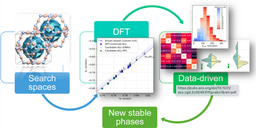Can AI clean up our planet and its own carbon footprint? We think so.
Published in Sustainability and Computational Sciences

Explore the Research
 elsevier.com
elsevier.com
Just a moment...
Skip to main content

In our research published here we attacked two sustainability headaches at once:
-
Smarter recycling – We released WaRP, an open-source dataset with 10,000+ conveyor-belt images covering 28 waste categories (bottles, cans, cardboard, detergents, etc.). Objects overlap, lighting is poor, shapes are distorted – exactly what real plants face, yet missing from most public datasets.
-
Leaner computation – We introduced H-YC, a hierarchical neural network that learns to detect and segment waste using only class labels (no costly pixel masks). Fewer annotations → less GPU time → lower CO₂ emissions.
Early results: • +8–12 % mean Average Precision versus strong baselines
• Accurate instance masks with zero mask supervision
• Ready-to-deploy in vision systems on industrial recycling lines
Why this matters: Every extra % of correctly sorted material is tons of plastic, glass and metal kept out of landfills, while every GPU-hour saved cuts the carbon bill of AI.
The WaRP dataset (MIT-licensed) and H-YC code are now live on GitHub. We’re looking for partners in waste management, computer vision and green-tech to push this further.
Let’s build recycling systems—and AI models—that are truly sustainable. 🌍
Follow the Topic
What are SDG Topics?
An introduction to Sustainable Development Goals (SDGs) Topics and their role in highlighting sustainable development research.
Continue reading announcement



